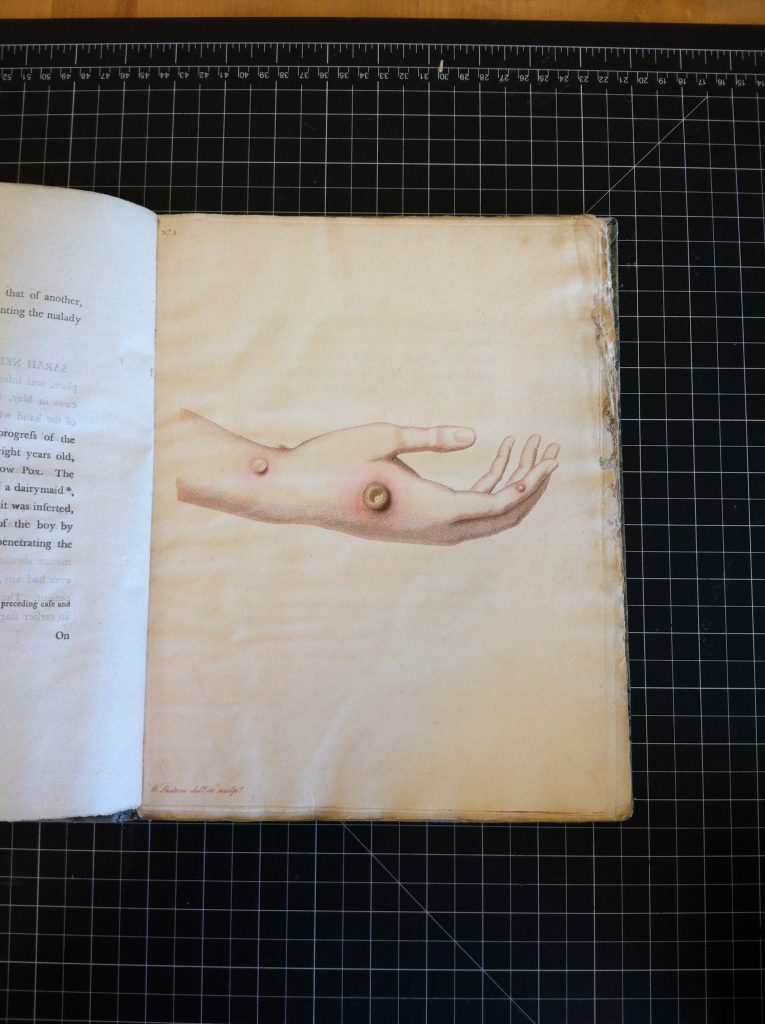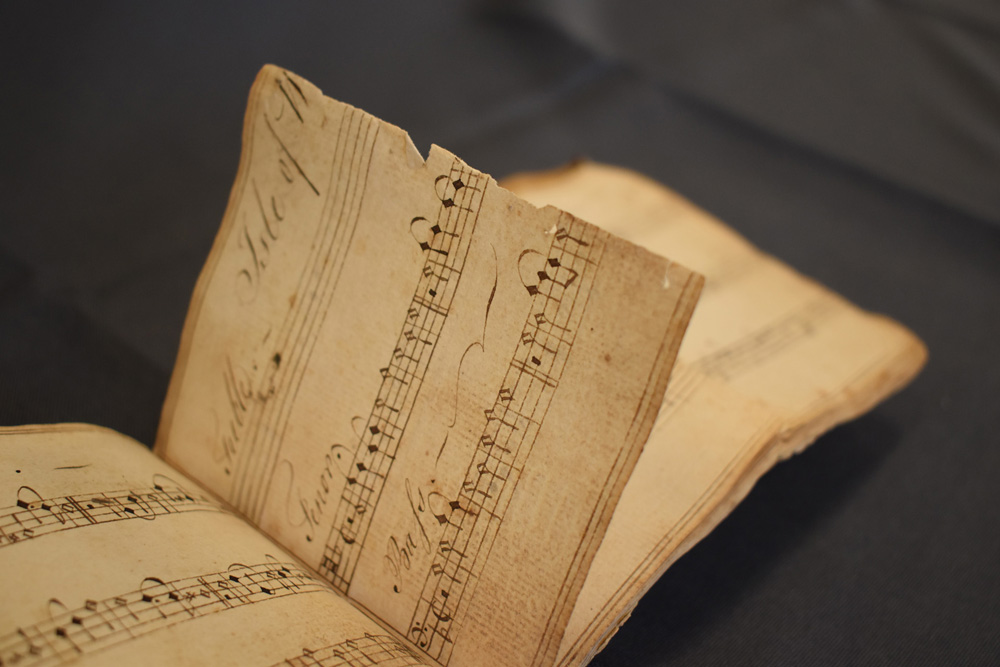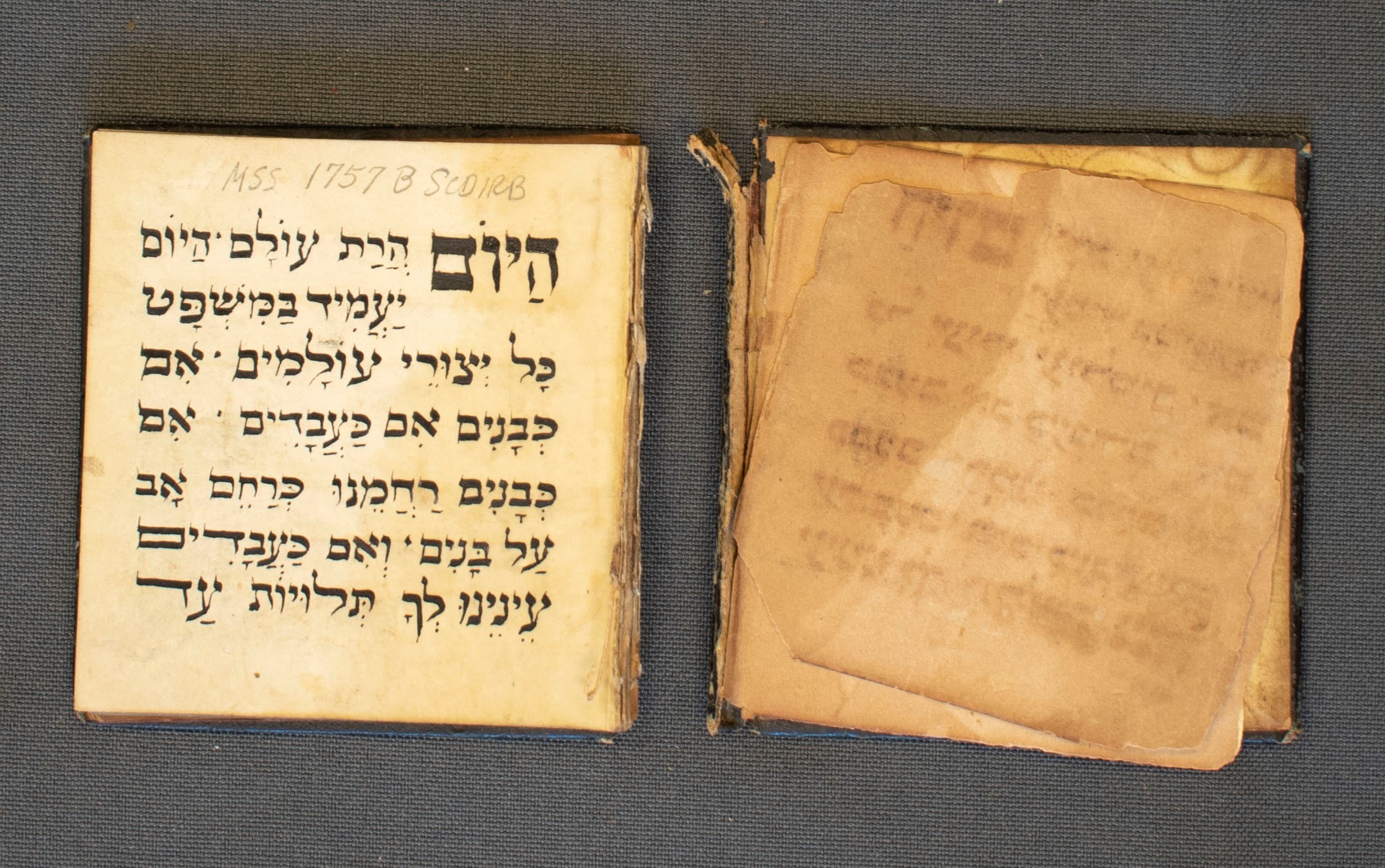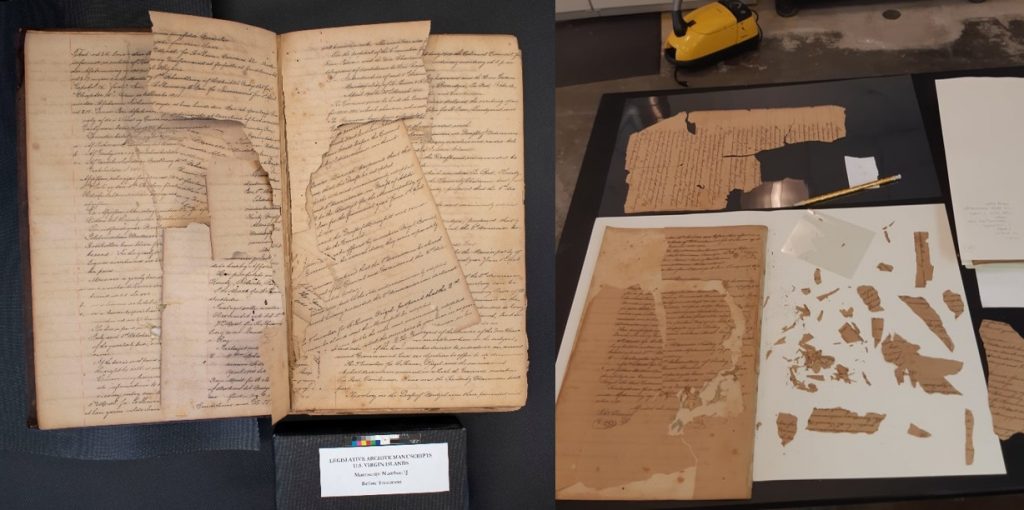We’re always in awe of our book conservators. Whether it’s mending a torn cover, giving a 16th century book the “full treatment”, or helping with international disaster relief efforts, they amaze us with their skill and expertise. On November 18th, our team shared their knowledge with the Twitterverse via #AskAConservator Day. This daylong chat was organized by the American Institute for Conservation (AIC) to help create awareness of the field of conservation and engage with the public. Our own conservators jumped at the chance to participate.
Our conservation experts included:
- Vanessa Haight Smith, Head of Preservation Services
- Katie Wagner, Senior Book Conservator
- Keala Richard, Conservation Technician
- Donald Stankavage, Conservation Technician
- Daniel Viltsek, Book Conservator
Our team answered over a dozen questions and their responses reached over two million twitter accounts! We’ve compiled most of the conversation in to one Twitter moment but we’ve also included a quick recap of our favorite responses below. We hope you find them helpful in caring for your own collections.
Q: I have an old family notebook in which the original writing has been obscured by scrapbook newspaper cuttings pasted over it. What’s the best way to remove the cuttings to reveal the original writing?
A: There are 3 common approaches to removal – heat, humidity, & solvents, depending on type of glue & condition of item. It’s a more complicated than it initially looks! We recommend looking for an AIC member in your area!
Q: What is your favorite thing you have ever worked on?
A1 (from Katie Wagner): Edward Jenner’s book about smallpox vaccine has it all: a compelling story – Jenner was the father of modern immunology, beautifully illustrated & hand colored with sanguine & involved array of conservation treatments: https://s.si.edu/3pNuExV

A2 (Vanessa Haight Smith): Repairing sheet music used by a fifer during the War of 1812: https://s.si.edu/2UGeCY1

A3 (Daniel Viltsek): I really enjoyed treating a Hebrew prayer book for Rosh Hashana- It’s a small pocket size manuscript handwritten in ink on parchment. It was an especially personal prayer book, created for a particular moment in the Rosh Hashana service.

Q: Best way to store fold out maps/diagrams to prevent them from tearing and creasing. Also, how do you smooth out maps that have been poorly folded?
A: For foldouts, it’s best to humidify and flatten. There is a great blog post by a former technician: https://s.si.edu/3lMPye6
Q: In an aging book, what’s the best thing to keep the brown areas from getting worse?
A: No easy answer to preventing browning, unfortunately. Keeping materials in areas with proper temperature and humidity control (at/ a little under 70 degrees Fahrenheit and at or just under 50% RH) is the best bet. No attics or basements! And keep away from direct or strong sunlight.
Q: Have you ever had to work on something so fragile you were afraid to even touch it? What did you do and how did you do it?
A: Our team recently worked on legislative records from the U.S. Virgin Islands where the paper was like potato chips in places! https://s.si.edu/36MgPqB

Still curious about conservation? Explore these recent blog posts from our Book Conservation Lab.

Be First to Comment